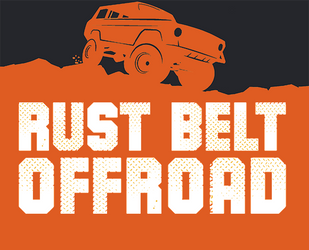LOGIN

How to Decode a 1967–1972 Chevy C10/K10 VIN Number
If you’re restoring, buying, or verifying a 1967–1972 Chevrolet C10 truck, decoding the VIN (Vehicle Identification Number) is essential. The VIN reveals key information about your truck’s model year, body style, assembly plant, and engine type—details that help confirm authenticity and guide your restoration.
At Rust Belt Offroad, we specialize in reproduction C/L Series truck bodies and components that match original GM specifications. Here’s a quick guide to understanding what your VIN tells you.
Understanding the Classic C10 VIN
From 1967 through 1972, Chevy trucks used a 13-character VIN stamped on the driver’s side door jamb and sometimes on the frame rail. Unlike modern 17-digit VINs, these earlier codes were simpler but required a bit of knowledge to decode.
Example VIN:CE140S123456
Let’s break this down piece by piece.
Step-by-Step Breakdown
1. First Letter – Series & Engine Type
The first letter identifies the drive type and engine:
| Letter | Meaning |
|---|---|
| C | 2WD (Rear-Wheel Drive) |
| K | 4WD (Four-Wheel Drive) |
The second character indicates the engine type:
| Letter | Engine Type |
|---|---|
| E | V8 engine |
| S | Inline 6-cylinder |
So in our example, “CE” means 2WD with a V8 engine.
2. Next Two Digits – Model Series
The next two digits identify the vehicle series or weight rating:
| Code | Model |
|---|---|
| 10 | ½ ton (C10/K10) |
| 20 | ¾ ton (C20/K20) |
| 30 | 1 ton (C30/K30) |
Our example has “10,” meaning it’s a ½-ton C10.
3. Fifth Digit – Body Type
This digit represents the body style or cab configuration:
| Code | Body Style |
|---|---|
| 3 | Stake Truck |
| 4 | Fleetside Pickup |
| 5 | Suburban/Panel |
| 6 | Stepside Pickup |
In “CE140S123456,” the “4” means it’s a Fleetside pickup.
4. Sixth Digit – Model Year
The model year is shown as a single number (not the full year):
| Code | Model Year |
|---|---|
| 7 | 1967 |
| 8 | 1968 |
| 9 | 1969 |
| 0 | 1970 |
| 1 | 1971 |
| 2 | 1972 |
So, “0” would represent a 1970 model.
5. Seventh Digit – Assembly Plant
This character identifies where your truck was assembled:
| Code | Assembly Plant | Location |
|---|---|---|
| S | St. Louis, MO | |
| Z | Fremont, CA | |
| J | Janesville, WI | |
| B | Baltimore, MD | |
| C | Flint, MI | |
| T | Tarrytown, NY | |
| U | Pontiac, MI |
In our example, “S” indicates St. Louis.
6. Last Six Digits – Sequential Production Number
These final numbers represent the production sequence, starting at 100001.
So “123456” means it was the 23,456th truck produced at that plant for that model year.
Example Decoded VIN
Let’s decode our sample VIN completely:
VIN: CE140S123456
Decoded:
C = 2WD
E = V8 Engine
10 = ½-ton C10
4 = Fleetside Pickup
0 = 1970
S = St. Louis, MO
123456 = 23,456th unit built
✅ Result: 1970 Chevrolet C10 ½-ton Fleetside Pickup, V8, built in St. Louis.
Why VIN Decoding Matters
-
Authenticity: Confirms if your truck’s parts match its original configuration.
-
Restoration Accuracy: Helps order the right reproduction panels, emblems, and trim.
-
Resale Value: Properly decoded VINs build buyer confidence in originality.
At Rust Belt Offroad, we build factory-style reproduction C10/K10, C20/K20, C30/K30 bodies and components—crafted in Ohio using heavy-gauge steel, spot-welded seams, and factory-correct details. Whether you’re restoring an original or building a custom project, understanding your VIN is the first step toward getting it right.
